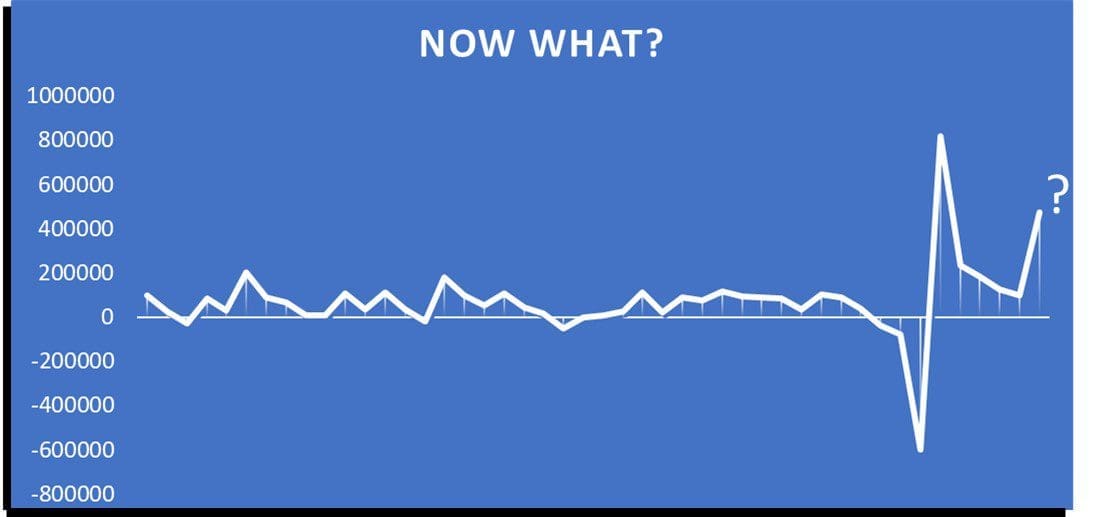Ratios, Comparables, Substitutes, Voodoo, and a Touch of Luck

It is hard to believe it has been two years since I was faced with forecasting WMS and warehouse automation market growth rates in the midst of the COVID-19 pandemic. At that time, I wrote about the COVID pandemic, and how similar events occur that elevate the uncertainty of the market. These events make accurate forecasting very difficult. Well, here we are just two years later in another highly unusual market context. I thought about Logistics Viewpoints readers as I attempted to account for the new factors in my WMS market forecast. It occurred to me that many of you are also responsible for navigating this dynamic environment of post-pandemic demand shifts, inflationary pressures, supply shortages, rising interest rates, and a potential economic downturn. I am going to take this opportunity to discuss some of the approaches I am using in the hope that some of my content will trigger a valuable idea for improving your approach.
New Factors with Limited History
I tend to use time series analysis as an anchor to my forecast, as I suspect many of you do. It only makes sense to use the past as an input to future expectations. However, time series provide only a general guideline rather than well-informed expectations. I once heard a prominent economist refer to influential long-term factors as “anchors” to expectations. I view time-series as an “anchor” to my forecasts. Not so coincidentally, the link above references an interview where this same economist references the Federal Reserve’s injection of liquidity as an anchor of expectations. The highest, most persistent inflation since the early 1980s is leading to reduced liquidity and higher interest rates – and additional uncertainty in forecasting economic activity. Taking a step back, the current inflationary environment is partially a result of supply shortages that themselves are partially a result of pandemic-related constraints. These current factors, in addition to the atypical activity of the recent past (whipsaw demand pattern), render time-series trends less relevant than in more stable environments. So, what methods can we apply to better gauge future trends?
Qualitative Review of Explanatory Variables
A review of explanatory variables can inform expectations, forecasts, and actions. However, the relationship between variables can shift, making them less reliable indicators in given circumstances. For example, in a recent CNBC interview Ben Bernanke noted that the Federal Reserve likely looked at the unemployment rate and total employment in early 2021 and inferred that there was plenty of slack in the labor market. However, in hindsight it became apparent that pandemic related factors influenced the relationship between these employment statistics and labor slack. In effect, the pandemic caused a distortion that led to less labor slack and greater inflationary pressures.
In my forecasting process, I am asking myself if there is reason to believe that independent variables responsible for influencing my growth expectations have changed. I have found this to be helpful in “tweaking” the likely growth within the markets. For example, interest rate hikes tend to deter lower priority investments and those that require debt financing. My colleagues and I have used past relationships between GDP and investment spending to gauge the potential magnitude of changes to investment spending in a recessionary environment. A review of similar comparisons may be informative in an environment of increasing interest rates. Inflation has led me to review the likely magnitude of importance for certain purchases, as employee compensation is not increasing at the same rate as inflation, diminishing purchasing power. Therefore, spending on consumer nondurables is likely to experience a decline, and shifts to substitute items will likely occur because of price differences. Substitutesare also relevant due to today’s supply constrained environment. A review of likely substitutes can inform potential changes in demand for given categories of items.
Review of Prior Impactful Events
When data on causal factors is not readily available, it can be informative to review the behavior of certain industries or economic activity in response to disruptive events. In the first half of 2020, my European colleagues Florian Güldner and David Humphrey conducted a thorough scenario analysis to estimate the potential impact of the corona virus on automation markets and supply chains. Their model used historical capital expenditure data of public companies broken down by end-user industry along with the impact of past regional economic shocks such as the Tokyo earthquake, Hurricane Katrina, the SARS virus outbreak, and other events. Their analysis showed which industries tend to have large swings in capital expenditures subsequent to economic shock. Of course, an analysis of this type uses dissimilar events with different mechanisms of influence on activity, but it can still provide some useful insights that can direct further analysis.
Final Word
As my statistics professor said “don’t worry about being right or wrong with forecasting. I’ll save you the suspense, you will be wrong. It’s more a matter of how close to correct your forecast will be.” Hopefully something in this article will trigger a useful thought for you and improve upon your forecasting so you can be …..somewhat close.






















